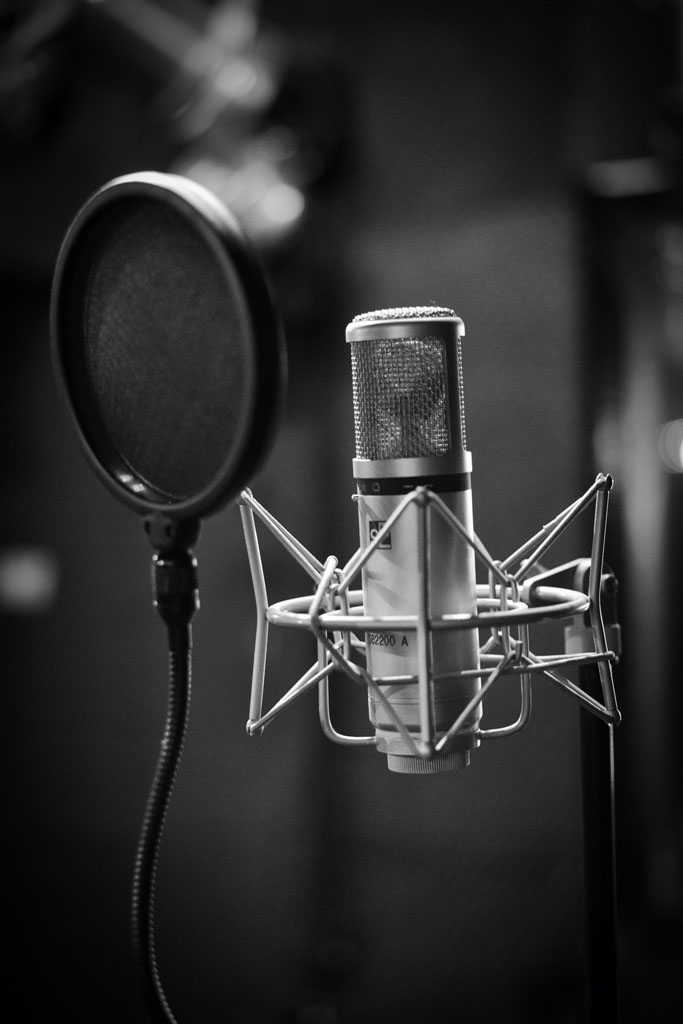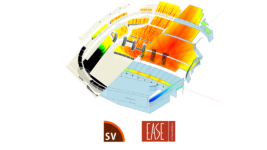LISTEN HERE
20 Feb 2024
Recording Vocals? Use a Vocal Mic

Subscribe to CX E-News
Of course, you could use a kick drum mic if you’d prefer, or frankly anything featuring a polar pattern. But please, whatever else you do this year, for the love of God, put a microphone in front of a singer if your primary aim is to record them. If 2023 was the year where at least one recording engineer I know questioned the validity of putting a mic on a vocal, what surprises are we in for in 2024? I dread to think.
To clarify: the last album I mixed in 2023 arrived on my doorstep at the last minute, disguised originally as a mastering job. This, in hindsight, should have rung enough alarm bells inside my head to have me reconsidering the job.
The client had confused mixing with mastering, referring to one as the other throughout the process. But this was no big deal – just the classic behaviour of someone new to the recording game. It happens.
To help pay for the 500 Christmas presents Santa had billed to our household in the preceding weeks, I took the ‘mastering’ job on right before the Christmas break, knowing it to be a straightforward acoustic guitar-based, singer-songwriter album, featuring only two elements: vocals and acoustic guitar. All the songs for the album had been recorded in a home studio setting over a single session, featuring live vocals and guitar, with only occasional birds twittering in the background.
Presumably this meant the songs would be consistent from track to track, which indeed they were, to my great relief.
I downloaded the album, transferred all the files into my Pro Tools rig (v2023.9) and had an introductory listen to the first song, getting my head around the sounds emanating from the very basic four tracks of the recording as it played.
By the end of this first playback I was already confused. ‘Which channel is the vocal mic on?’ I wondered to myself.
So I listened through again…
‘Pencil mic – left’, ‘Pencil mic – right’, a mic labelled ‘Central MS Rec’, which was confusing indeed, and a fourth mic labelled as its so- called pair, but which clearly sounded very different to ‘MS’ – more like a distant room mic. ‘Was this an M/S element?’ I wondered. Things were getting weird at this point.
By the third listen through it was clear to me that something was wrong. Either I hadn’t downloaded all the files, or I’d misunderstood the email thread… perhaps there was a second invite to a folder labelled ‘Vocals’ that I hadn’t seen.
Midway through the fourth listen, as I simultaneously glanced at the correspondence around the project, I finally cracked it, and made the first of many calls; this one to the client.
“Hey Joe, can you tell me please which of the recording files for ‘Beach Bum’ is supposed to be the vocal mic? I can’t seem to find it. Or is there another folder I should be accessing that might have the vocal takes in it?”
“Nah man,” says my client, coolly. “We didn’t use a vocal mic. I wanted it to be a live recording, and just wanted to sound like me, if you dig what I’m saying.”
Stunned Silence
As you might imagine, at this point I was thrown for a loop, totally flabbergasted by what I’d just heard, my client then doubling down in Trumpian fashion, asserting that he’d gone with this approach because, apart from wanting to remain authentic to his music – which was totally fair enough – apparently “That’s what they’re doing in Nashville.”
Okay, so now I had to step back a little, and quickly take stock of what I’d been confronted with here.
I had an album worth of songs performed by a singer with his guitar, none of which contained a recording of a close-up vocal, only a stereo pair of ‘pencils’ that were dominated by the booming sound of the acoustic, a channel labelled ‘Central MS Rec’ which I’d yet to decipher, and a fourth mic that seemed to be – though it was not labelled this way – a distant mono room mic.
After a slightly stunted, semi-polite conversation with the client, where I might have included the words: “Show me a vocal performance, live or in the studio, where the singer isn’t singing into a mic,” we signed off.
The next call was to the guy who recorded the album. Let’s call him the ‘recording engineer’ because apparently that’s what he calls himself. When quizzed about the session, and wondering if there might be a photo or two of the recording setup, I was told by ‘Fred’ that there were no photos of the session, and indeed yes, there was no close vocal mic setup in front of (or indeed above, behind, or next to) the singer. None.
Instead, there were only the boomy pencil mics, and a wider, more distant stereo pair of front-address condensers.
“A stereo pair of large-diaphragm condensers?” I asked, somewhat confused. “Right, I see. So the channel labelled ‘Central MS…’ has nothing to do with Mid/Side then, perhaps in relation to that fourth mic, the distant one? I’m a bit confused about how they go together.”
“No, they’re a pair. MS stands for Mic Silver, and the other one is the same distance away, on the left.”
“Righto…” I added, trailing off into thought about how to proceed from here, and whether to be impolite at this point and ask the obvious question, which I inevitably then did:
“Hey Fred, what was the reasoning behind not using a vocal mic for the recording? I mean, the guy is a singer with a guitar, after all…”
“Well, Joe seemed to think it was the best way for him to capture an authentic sound… and in the end the client is always right.”
“The client is always, right? Really? I would have thought if a client comes to you professing to have no recording experience whatsoever, it would be your job to offer him or her professional advice around the best way to capture their performance. Oh well, c’est la vie. if there’s no vocal mic then we can’t change that fact now. I’ll just have to deal with it.”
The rest of my conversation with Fred was really a half joking, half lecturing chat around how I disagreed in principle with his so-called ‘technique’, such as it was, and that if Joe wasn’t wearing headphones or monitoring his performance during the session – which apparently, he wasn’t – how would have adding a vocal mic impacted the ‘authenticity’ of Joe’s performance? Fred could have pretty much put mics wherever it suited him.
Politely, and after some friendly banter unrelated to the job, I wished Fred a Merry Christmas and hung up.
Seconds later, I rang Joe again, pressing him in a third phone call where he again insisted that he wanted to sound live and perhaps somewhat raw, and mentioned Nashville again, whereupon I finally relented and went with the unorthodox flow. “It’s not how I would have done it,” I reminded him, “You know that much by now, but if you insist, then I’ll do what I can.”
“Can I come down for a listen?” he added, probingly.
“Sure,” I agreed, excited no end by the prospect of a client coming down to The Mill unexpectedly on what was then only a couple of days shy of Christmas Eve.
So he came down; we had a listen and another conversation about the recording technique, and after several hours Joe finally left, adding a “Merry Christmas,” and a “Thanks for doing this last minute, man” as the door clicked shut.
I got to work.
It was tricky, and things remained stubbornly not what they seemed – certainly not what they were labelled. After a short while trying again to grapple with the four channels, I finally convinced myself that the aforementioned fourth mic, the details of which hadn’t ever been resolved to my satisfaction and which Fred insisted was a large-diaphragm condenser, was in fact some sort of weird room mic.
No disaster there. I simply stopped trying to pair this channel with ‘MS’ and moved on. But something kept chirping in my ear about it, so I eventually contacted the recording engineer again, this time via text:
“Hey Fred, sorry to bug you again about Joe’s recording right on Christmas, but I just can’t wrap my head around those other two mics being a stereo pair. To me, one sounds clearly like a room mic. I’m just wondering… is it possible that, on the day you guys recorded, there was a mic in the corner somewhere that was packed up but still plugged in? And is it possible that, although you might have been monitoring your four recording mics, one was mispatched and you’ve inadvertently recorded one of the mics in the corner, by accident?
Have a quick listen to the recordings again, if you’re able to, and get back to be. Much appreciated! Thanks man, Andy.”
Text back from Fred:
“Oh shit…”
So now it was confirmed: I had a pair of boomy acoustic guitar mics that contained a weak and thin vocal sound, a single more distant large-diaphragm condenser that was similarly dominated by the guitar, and a bad room mic that was capturing the whole performance in an inarticulate, washed out, midrange-heavy way… with birds.
Just what the doctor ordered.
Mixed & Mastered
But I pressed on, regardless. I mixed the whole album, working hard to dredge up any vocal volume I could, and then mastered it for online streaming.
It sounded reasonably good in the end, albeit compromised by the recording process and certainly not what I would have chosen as a ‘sound’ for the album. I had made the best of it, nonetheless and somewhere around the time Santa was in his sleigh, I sent it to Joe for a listen.
In a genuine moment of shock for me, when Joe finally heard the results, he freaked out – hated it, and quickly looked to blame me for the album’s poor audio quality. Joe’s lack of experience in the studio, and my reluctance to throw the recording engineer under the bus for obvious reasons, made the conversation a tricky one. I let him vent at first, and eventually we talked about solutions – which were scant on the ground – and even the possibility of re-recording, the cost of which I simply was not prepared to wear.
But then, out of left-field, Joe told me there were ‘two-track recordings’ of one song in another folder… “Perhaps we could use that?” Joe pleaded with me out of desperation.
So I download a folder called ‘Two-Track Recordings’ and imported all its contents into Pro Tools once again. As it turned out, this was a prior session that had been a test run of Joe’s album. All the files were jumbled up, but once I got to the bottom of what channels went with which takes, one complete song revealed itself like a Time Team episode. More to the point, it had a whopping seven channels of audio, one of which was a close vocal mic! A miracle!
So I mixed and mastered this track for free for my deeply upset client, even though this whole saga was really nothing to do with me. His response? He loved it!
We talked exhaustively in the days that followed about what had transpired over the Christmas/New Year period, about recording techniques and ‘authenticity’, and Joe has now finally decided to put the album out as a quasi- live recording, and the other track as his first studio single release.
In 2024, I urge all engineers, if they’re recording someone’s voice, to please put a mic in front of it. Preferably not 25 feet away in the corner of the room. I don’t want to have to mix that ‘Nashville sound’ ever again!
Andy Stewart owns and operates The Mill in Victoria, a world-class production, mixing and mastering facility. He’s happy to respond to any pleas for pro audio help…
contact him at: andy@themill.net.au or visit: www.themill.net.au.
Subscribe
Published monthly since 1991, our famous AV industry magazine is free for download or pay for print. Subscribers also receive CX News, our free weekly email with the latest industry news and jobs.






